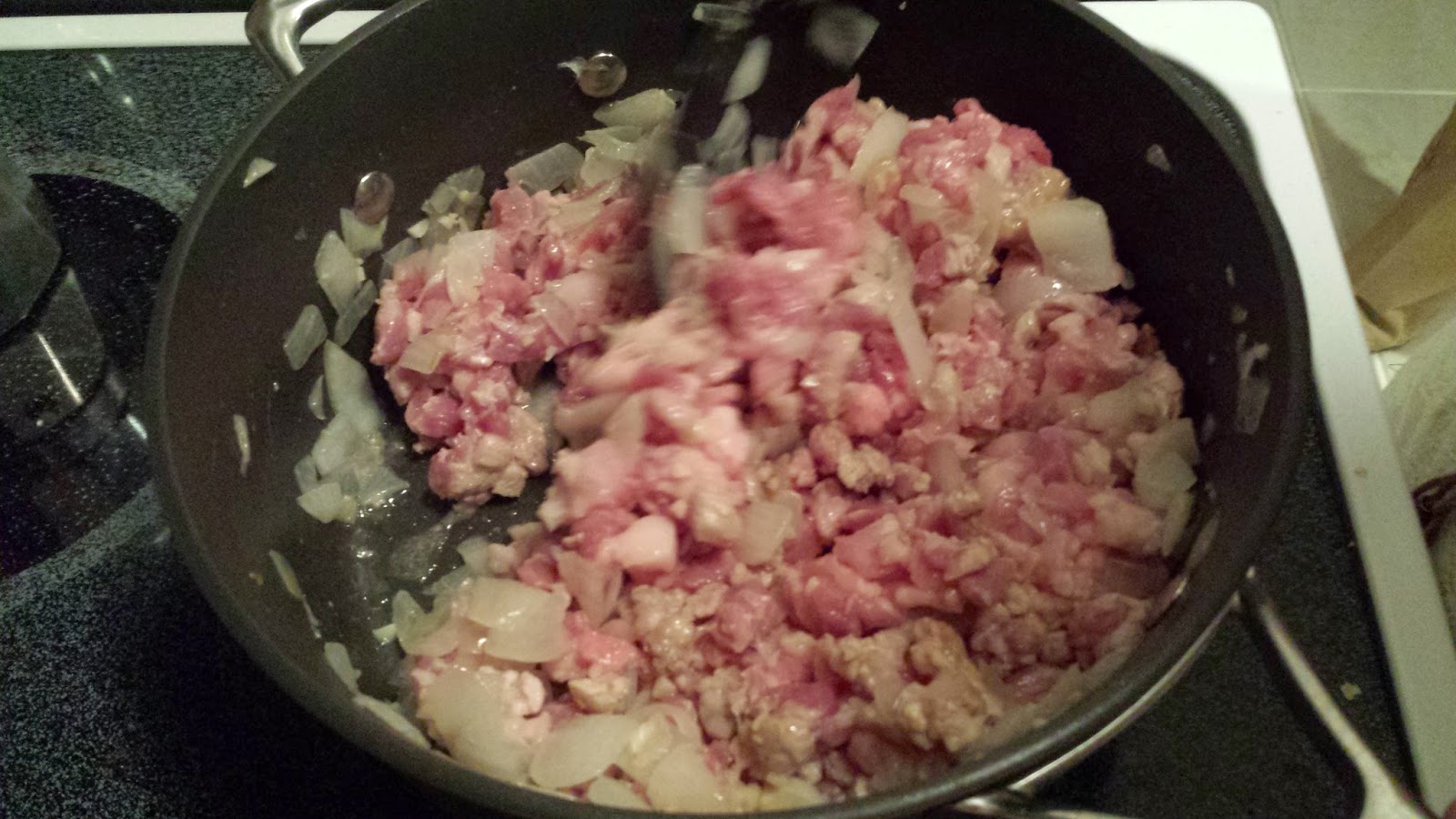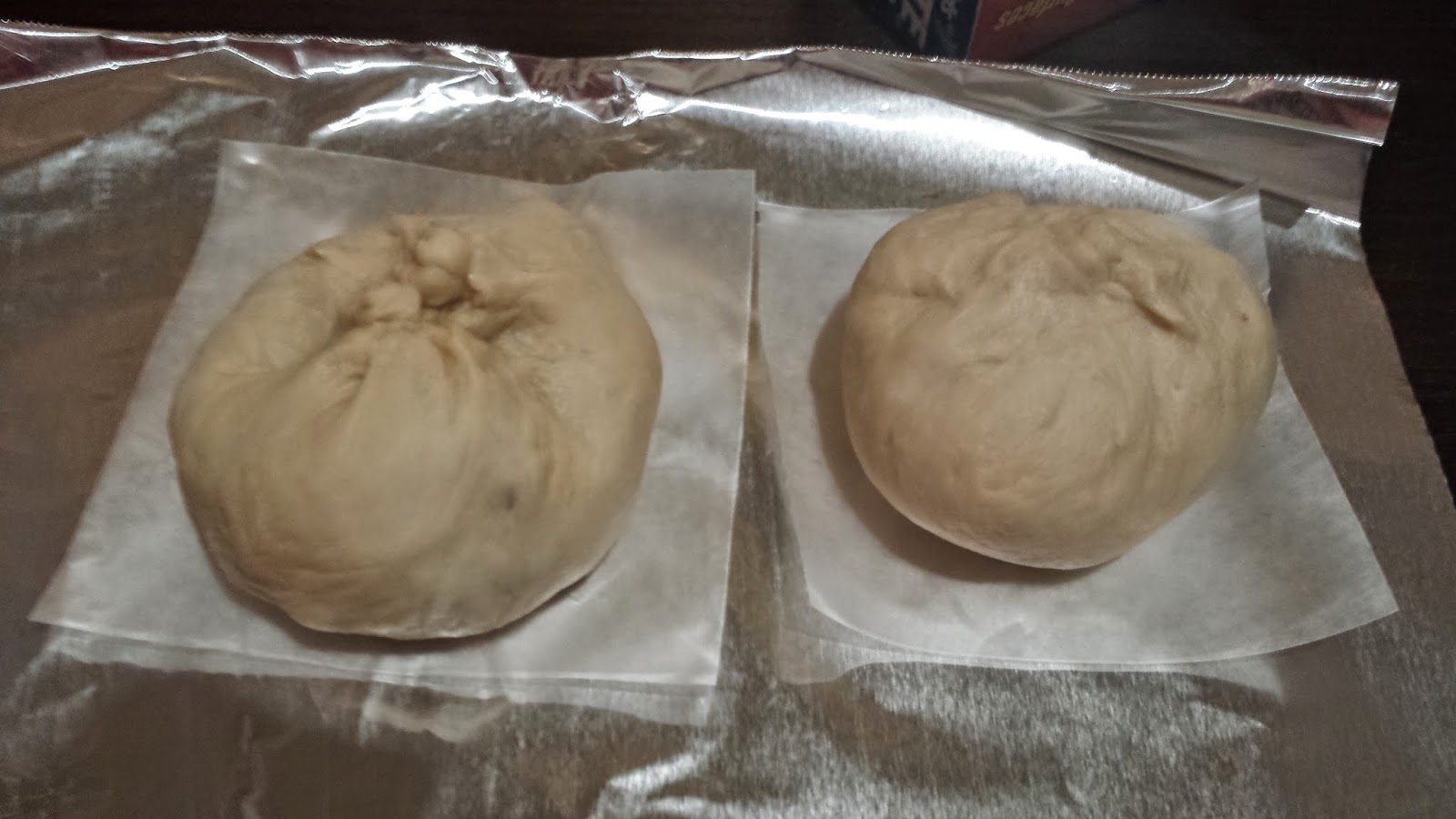On this blog nearly nine months ago, I set out to document adventures with, thoughts on, and experiences in food. I put up quite a few posts in the initial months before trailing off. Here are some of the things in the last seven to eight months that never quite made it to the blog, though I think they are still worthy of mentioning. If you have some affinity for Chinese food and are in need of stimulating your appetite, this is for you. Enjoy!
Creative steamed bread (馒头) my mother made.
My mother's steamed bread is usually pretty tasty, and with these she decided to up the game by making cute designs. There are little piggies, daisy flower designs, rose flower designs, fun swirls, and other appetizing breads.
Homemade Lamb Dumplings!
Back when I went on a weekly dumpling-making craze, I tried a lamb filling one week, and it was a huge success. Looking as I may need to go back on a dumpling-making craze soon due to financial reasons, I am really looking forward to more experiments.
Autumn Stir-Fry Medley
A colorful autumn stir-fry medley I made a few months ago that included lamb, zucchini, red bell peppers, orange bell peppers, and onions. In this photo, it had been refrigerated overnight and reheated in a microwave so some of the color has degraded, but it was still tasty!
Siopao From Southeast Asia
A while back, I got together with friends for drinks, merriment, and making siopao. Siopao, a named derived from Hokkien, was a new experience for me because it is a Southeast Asian take on the very prevalent Asian steamed bun. We made it together from scratch: dough, filling, and all, even starting from a slab of pork shoulder instead of ground pork! Pretty proud to have been part of the tasty end product.
Longan (龙眼) or Dragon Eyes, One of my Favorite Fruits
In America, fruit triples as a refreshing snack, a great source of sugary drinks, and a moniker used in juvenile shaming rituals. In China, people name their fruits after the eyes of dragons.
Asian Eggplant Pork Stir-fry
Eggplants are one of the most versatile vegetables out there, to say nothing specific of the long Asian variety. Here, I made a simple stir-fry with ground pork, ginger, green onions, and a little cooking wine.
Mai Style Homemade Ramen
My friend Mai made some ramen noodles from scratch and put it together in a bowl of well-prepared vegetables, soup stock, and beef stewed overnight. The flavor was top notch, and my only complaint was that the noodles were cooked longer than preferred, which we discussed over dinner.
Pho Sate
Yes, another Asian noodle soup, this time from the Southeast. I ventured to Pho Sate based on a friend's recommendation for their sauce, and the sauce did not disappoint. The soup was flavorful although the cuts of meat were lacking in comparison to my favorite NOVA/DC joint,
Pho 75.
Salmon Steak with Snow Peas Dinner
One of the simple preparations my mother taught me when I was first learning to make food without burning down a building was baked salmon steak. Here, the salmon has been marinated with honey, ginger powder, coriander, paprika, old bay, dried parsley flakes, and a touch of Montreal steak seasoning. The snow peas are simply stir-fried with garlic and a light sprinkling of salt.
Steamed Pork Belly Rice Cake (粉蒸肉)
This was a neat salivation-inducing cake the neighbors brought over for Thanksgiving dinner at my parents' home. It is a cake made from rice and pork belly marinated overnight in a special sauce and then steamed in its cake form with carrots, mangoes, and a few spices. I may have to try making it in the future!
Hearty Steamed Bread (馒头) To Go
This is a special steamed bread my mom experimented with over Christmas and New Years where she combined wheat germ, almond meal, cashew meal, corn meal, and ground chestnut into the dough, making for an extremely hearty bread bun that I would totally carry with me on a hiking trip. This beats trail mix or granola bars any day in my book.
Miso-Glazed Eggplant Round 145
This is actually a returning guest from a past dish I tried to make,
matcha infused rice with miso-glazed eggplants, inspired by Blue Apron. By the elongated shape, you can tell these are Asian eggplants, and they are so good that I have made these again and again on nights when I am in need of an easy dinner.
Fresh Shiitake Mushrooms
This is not a dish in itself; rather it is clearly a raw ingredient. But I wanted to include these because of my boundless love for mushrooms. There are so many different mushrooms and fungi that have found their way into cultural cuisines all over the world, and it makes me happy to know that there is a whole world to be explored in food based on fungi. One of my favorites so far is wild mushroom hotpot from Yunnan province in China.
Taiwanese Shortcakes
The world of Asian snacks is also a vast world with many hidden gems as well as many duds. One of those gems lacking a proper English name better than "shortcake" probably originated in Taiwan. The most common variety are made from a pineapple paste, but as you can see below, there are also cakes with melon-flavored paste, mango-flavored paste, and green-tea flavored paste. So much goodness.
Siam Cafe in Downtown Cleveland
While visiting my parents recently, my mother took us out to Siam Cafe, which is an old favorite of mine in the Cleveland area. One of the cool things about there not being as many Chinese folks or authentic Chinese restaurants in the Midwest is that the Chinese communities are a little more close-knit. Case in point: I found out my mother is a friend of the manager/owner of this place, in addition to the other Chinese restaurant owners with whom I know she is friends. Pictured below is lobster, hot iron beef, and a tofu-vegetable medley, Chinese style. Not pictured: we also ordered frog that day.
Homemade Lamb and Tomato Sauce with Rice
I was feeling lazy recently and decided to make a home-made meat sauce with ground lamb, tomatoes, and green onions. Below is the end result served with rice in the style of a Japanese curry.
Chinese Home Fried Rice
Every Asian culture and every household has their own preparation of fried rice. I made the one pictured below in a large batch when I found myself needing to feed one of my brothers who visited me for a few days. This rice contains bits of scrambled egg, beef, zucchini, carrot, and green onions.
Chinese Soup Mochi
I have no idea where mochi originally came from, but to my knowledge, all three Northeastern Asian cultures (Korea, Japan, China) have their own version of it. A traditional Chinese preparation for mochi is to cook it in scented water or sweet rice wine as a light, palate-cleansing, soothing dessert. When using scented water, I have typically had mochi in ginger water, so it was a pleasant new experience for me when my mother brought back sweet osmanthus (桂花) flowers from China for scenting the water.
If you read through all of that, I hope you enjoyed it and are now one-step closer to ravenous desire for some amazing Chinese food!




























